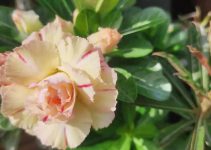Lemon Balm
Melissa officinalis
Lemon balm’s quilted green leaves release a delicious lemony aroma when brushed, making it the perfect fragrant addition to plantings near patios and garden benches. Low-maintenance lemon balm thrives in beds or containers, as long as roots sink into well-drained soil. Bees can’t resist this bushy beauty, so be sure to tuck it in a garden where you grow vegetables and fruits that need pollinating. Trim plants after flowering to limit seeds and subsequent self-sown volunteers. Take advantage of lemon balm’s scent as an insect deterrent — toss a few stems onto a hot grill to drive away mosquitoes.
Light: Part sun, Sun
Type: Herb. Perennial
Height: 1 to 3 feet
Width: 2 feet wide
Flower color: White
Seasonal features: Fall bloom, Summer bloom
Problem solvers: Deer resistant, Drought resistant
Special features: Attracts birds, Fragrance, Good for containers, Low maintenance
Zones: 4-11
How to Grow Lemon Balm Plants
Growing lemon balm is very easy. The plants are not picky about where they grow and will grow in almost any soil, but they grow best in rich, well drained soil. Lemon balm plants will grow in part shade to full sun, but flourish best in full sun.
It is not recommended that you fertilize lemon balm, as this can cause the strength of its scent to be reduced.
Lemon balm is easily propagated from seeds. cuttings or plant divisions.

